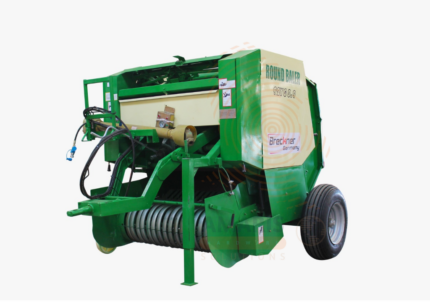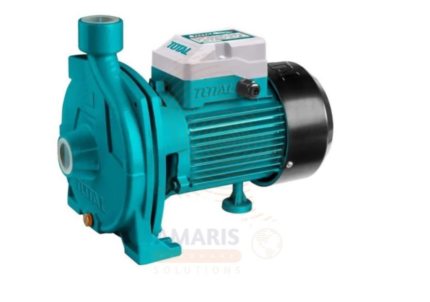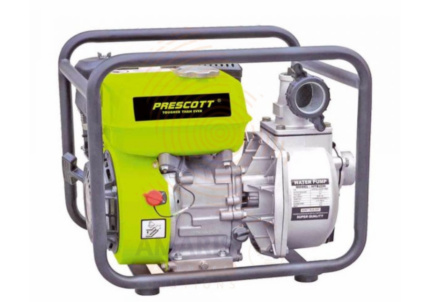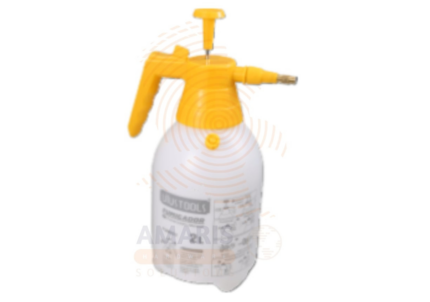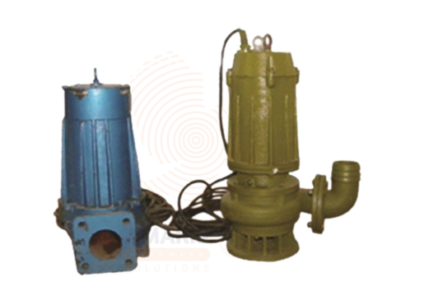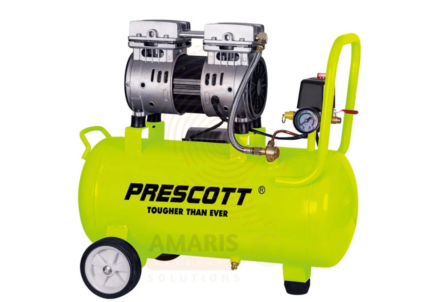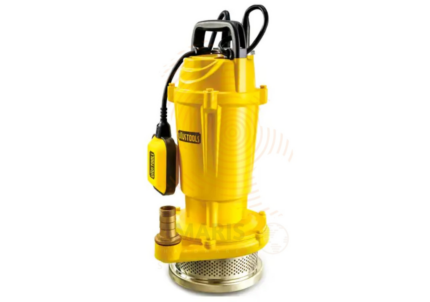Hand Rotary Barrel Pump
$47.31 Original price was: $47.31.$44.95Current price is: $44.95.
A hand rotary barrel pump is a manually operated pump designed to transfer liquids, typically from barrels or containers, through a rotary pumping mechanism. The pump is equipped with a hand crank or lever that, when turned, activates a rotary gear or vane system inside the pump. This rotary action creates suction, allowing the pump to draw liquid from the source container and then dispense it through a spout or nozzle. Hand rotary barrel pumps are commonly used for transferring various fluids such as oils, fuels, chemicals, and other non-corrosive liquids. They offer a portable and efficient solution for applications where a power source may be unavailable or impractical.
Table of Contents
ToggleHand Rotary Barrel Pump
Uses
-
Fuel Transfer:
-
Hand rotary barrel pumps are frequently used for transferring fuels such as gasoline, diesel, kerosene, or other petroleum-based liquids from barrels to tanks or vehicles.
-
-
Oil Dispensing:
-
These pumps are suitable for dispensing various oils, including motor oil, hydraulic oil, and lubricating oils.
-
-
Chemical Transfer:
-
In situations where small quantities of chemicals need to be transferred, hand rotary barrel pumps can be used for safe and controlled dispensing.
-
-
Solvent Handling:
-
Industries dealing with solvents or cleaning agents often use hand rotary barrel pumps to transfer these liquids between containers.
-
-
Agricultural Applications:
-
Farmers and agricultural workers use these pumps for transferring fertilizers, pesticides, and other agricultural chemicals from barrels to equipment or storage containers.
-
-
Water Transfer:
-
Although not as common, hand rotary barrel pumps can also be used for transferring non-corrosive liquids, such as water, in situations where a manual pumping mechanism is sufficient.
-
-
Laboratory Use:
-
In laboratory settings, these pumps can be utilized for transferring small volumes of liquids for experimental or testing purposes.
-
-
Remote Locations:
-
Hand rotary barrel pumps are valuable in remote locations or areas without access to electricity, where manual pumping is the only viable option for liquid transfer.
-
-
Emergency Situations:
-
They can serve as backup or emergency pumps in cases where power-operated pumps may fail or be unavailable.
-
-
Mobile Operations:
-
Due to their portability, hand rotary barrel pumps are commonly used in mobile operations, such as construction sites, where a compact and easily transportable pumping solution is required.
-
Safety Precautions
-
Read and Understand Instructions:
-
Familiarize yourself with the manufacturer's instructions and guidelines for the specific hand rotary barrel pump you are using. Follow recommended procedures for installation, operation, and maintenance.
-
-
Compatible Fluids:
-
Ensure that the pump is suitable for the type of fluid you are transferring. Some pumps may not be compatible with corrosive or reactive substances.
-
-
Personal Protective Equipment (PPE):
-
Wear appropriate personal protective equipment, including gloves and safety goggles, to protect against contact with the pumped liquid and any potential splashes.
-
-
Secure Pump Placement:
-
Ensure the pump is securely and stably mounted on the barrel or container. This helps prevent accidental spills or tip-overs during operation.
-
-
Grounding:
-
Ground the pump and the container if you are handling flammable liquids to reduce the risk of static electricity buildup and potential sparks.
-
-
Inspect Equipment:
-
Regularly inspect the hand rotary barrel pump for any signs of damage, wear, or malfunction. Replace any damaged or worn parts before use.
-
-
Proper Sealing:
-
Make sure that all connections and seals are properly tightened and secured. Leaks can lead to spills and pose safety hazards.
-
-
Control Flow:
-
Operate the pump at a controlled and moderate speed to maintain stability and prevent splashing. Avoid excessive force on the hand crank or lever.
-
-
Emergency Shut-off:
-
Familiarize yourself with the emergency shut-off procedures in case of unexpected situations. Know how to quickly stop the pumping process if needed.
-
-
Proper Ventilation:
-
Ensure there is adequate ventilation in the area, especially when handling volatile or noxious liquids, to prevent the buildup of fumes.
-
-
No Smoking:
-
Strictly prohibit smoking in the vicinity of the pumping operation, especially when dealing with flammable liquids.
-
-
Training and Supervision:
-
Ensure that operators are adequately trained on the safe use of the hand rotary barrel pump. Supervise inexperienced users until they are familiar with the equipment.
-
-
Emergency Response:
-
Have appropriate emergency response measures in place, including access to spill kits, fire extinguishers, and first aid supplies.
-
-
Secure Containers:
-
Make sure the containers receiving the pumped liquid are secure and stable to prevent spills or tipping.
-
-
Environmental Considerations:
-
Be mindful of environmental regulations and guidelines when handling and transferring liquids. Properly dispose of any spilled or leftover substances according to local regulations.
-


 Acrylic Sealants
Acrylic Sealants Construction Adhesives
Construction Adhesives Double-Sided Tape
Double-Sided Tape Duct Tape
Duct Tape Electrical Tape
Electrical Tape Epoxy & Resins
Epoxy & Resins Masking Tape
Masking Tape
 Automotive Wrenches & Socket Sets
Automotive Wrenches & Socket Sets Battery Chargers & Jump Starters
Battery Chargers & Jump Starters Car Jacks & Stands
Car Jacks & Stands Car Wash & Detailing Products
Car Wash & Detailing Products Diagnostic Tools
Diagnostic Tools Tire Inflators
Tire Inflators Vehicle Lighting
Vehicle Lighting Oil & Lubricants
Oil & Lubricants
 Adhesives & Sealants
Adhesives & Sealants Bricks & Blocks
Bricks & Blocks Cement & Concrete
Cement & Concrete Drywall & Plaster
Drywall & Plaster Flooring (Tiles, Wood, Laminate)
Flooring (Tiles, Wood, Laminate) Lumber & Plywood
Lumber & Plywood Paints, Primers & Coatings
Paints, Primers & Coatings Insulation Materials
Insulation Materials Roofing Materials
Roofing Materials
 Circuit Breakers
Circuit Breakers Electrical Cables & Wires
Electrical Cables & Wires Switches & Sockets
Switches & Sockets Fuses & Relays
Fuses & Relays Connectors & Terminals
Connectors & Terminals Electrical Boxes & Panels
Electrical Boxes & Panels Conduit & Fittings
Conduit & Fittings Lighting Fixtures & Bulbs
Lighting Fixtures & Bulbs Extension Cords & Power Strips
Extension Cords & Power Strips
 Anchors
Anchors Bolts
Bolts Clips & Clamps
Clips & Clamps Screws
Screws Nuts
Nuts Washers
Washers Rivets
Rivets Nails
Nails Threaded Rods
Threaded Rods
 Hammers
Hammers Measuring Tools (Tapes, Levels, Calipers)
Measuring Tools (Tapes, Levels, Calipers) Screwdrivers
Screwdrivers Pliers & Cutters
Pliers & Cutters Saws & Blades
Saws & Blades Chisels & Punches
Chisels & Punches Allen Keys & Hex Keys
Allen Keys & Hex Keys Ratchets & Socket Sets
Ratchets & Socket Sets Wrenches & Spanners
Wrenches & Spanners
 Power Tool Accessories (Blades, Bits, Discs)
Power Tool Accessories (Blades, Bits, Discs) Rotary Tools
Rotary Tools Saws (Circular, Jigsaw, Reciprocating)
Saws (Circular, Jigsaw, Reciprocating) Drills & Drivers
Drills & Drivers Grinders & Sanders
Grinders & Sanders Heat Guns
Heat Guns Nail Guns
Nail Guns Impact Wrenches
Impact Wrenches Batteries & Chargers
Batteries & Chargers
 Pipes & Fittings (PVC, Copper, PEX)
Pipes & Fittings (PVC, Copper, PEX) Plumbing Tools
Plumbing Tools Pumps & Motors
Pumps & Motors Sealants & Adhesives for Plumbing
Sealants & Adhesives for Plumbing Valves & Taps
Valves & Taps Water Heaters
Water Heaters Drainage Systems
Drainage Systems Faucets & Fixtures
Faucets & Fixtures Hoses & Tubing
Hoses & Tubing
 Hinges & Latches
Hinges & Latches Hooks & Brackets
Hooks & Brackets Window Hardware
Window Hardware Chains & Cables
Chains & Cables Casters & Wheels
Casters & Wheels Shelving & Storage Systems
Shelving & Storage Systems Door Handles & Locks
Door Handles & Locks Drawer Slides & Cabinet Hardware
Drawer Slides & Cabinet Hardware
 Personal Protective Equipment (PPE)
Personal Protective Equipment (PPE) Respirators & Masks
Respirators & Masks Safety Glasses
Safety Glasses Safes
Safes Security Cameras
Security Cameras Gloves
Gloves Helmets
Helmets Ear Protection
Ear Protection Fire Safety Equipment
Fire Safety Equipment Locks & Padlocks
Locks & Padlocks Motion Sensors & Alarms
Motion Sensors & Alarms
 Garden Fencing
Garden Fencing Garden Furniture Hardware
Garden Furniture Hardware Lawn Mowers
Lawn Mowers Trimmers & Edgers
Trimmers & Edgers Shovels & Spades
Shovels & Spades Rakes & Hoes
Rakes & Hoes Pruning Shears & Loppers
Pruning Shears & Loppers Watering Systems (Hoses, Sprinklers, Nozzles)
Watering Systems (Hoses, Sprinklers, Nozzles)
 Interior Paints
Interior Paints Paint Brushes & Rollers
Paint Brushes & Rollers Paint Strippers & Thinners
Paint Strippers & Thinners Paint Trays & Accessories
Paint Trays & Accessories Exterior Paints
Exterior Paints Spray Paints
Spray Paints Primers & Undercoats
Primers & Undercoats Varnishes & Stains
Varnishes & Stains
 Gaskets & Seals
Gaskets & Seals Hydraulic Fittings
Hydraulic Fittings Industrial Fasteners
Industrial Fasteners Industrial Hoses
Industrial Hoses Lubricants & Greases
Lubricants & Greases Metal Sheets & Bars
Metal Sheets & Bars Bearings & Bushings
Bearings & Bushings Belts & Pulleys
Belts & Pulleys
 HVAC Filters
HVAC Filters Insulation for HVAC
Insulation for HVAC Air Conditioners
Air Conditioners Refrigerants
Refrigerants Ventilation Ducts & Fittings
Ventilation Ducts & Fittings Thermostats & Controllers
Thermostats & Controllers Fans & Blowers
Fans & Blowers
 Pegboards & Hooks
Pegboards & Hooks Shelving Units
Shelving Units Storage Bins & Containers
Storage Bins & Containers Toolboxes & Tool Chests
Toolboxes & Tool Chests Workbenches
Workbenches Drawer Organizers
Drawer Organizers Labeling Supplies
Labeling Supplies
 Welding Accessories (Clamps, Brushes)
Welding Accessories (Clamps, Brushes) Welding Electrodes & Rods
Welding Electrodes & Rods Welding Helmets & Gloves
Welding Helmets & Gloves Welding Machines
Welding Machines Soldering Irons & Stations
Soldering Irons & Stations Flux & Solder Wire
Flux & Solder Wire
 Generator Accessories
Generator Accessories Inverters
Inverters Portable Generators
Portable Generators Power Inverters
Power Inverters Transfer Switches
Transfer Switches Diesel & Gasoline Generators
Diesel & Gasoline Generators
 Transport Equipment: Carts, Dollies, and Hand Trucks
Transport Equipment: Carts, Dollies, and Hand Trucks Storage Solutions: Pallets, Racks, and Containers
Storage Solutions: Pallets, Racks, and Containers Lifting Equipment: Hoists, Cranes, and Jacks
Lifting Equipment: Hoists, Cranes, and Jacks Conveyors and Accessories: Belts and Rollers
Conveyors and Accessories: Belts and Rollers

